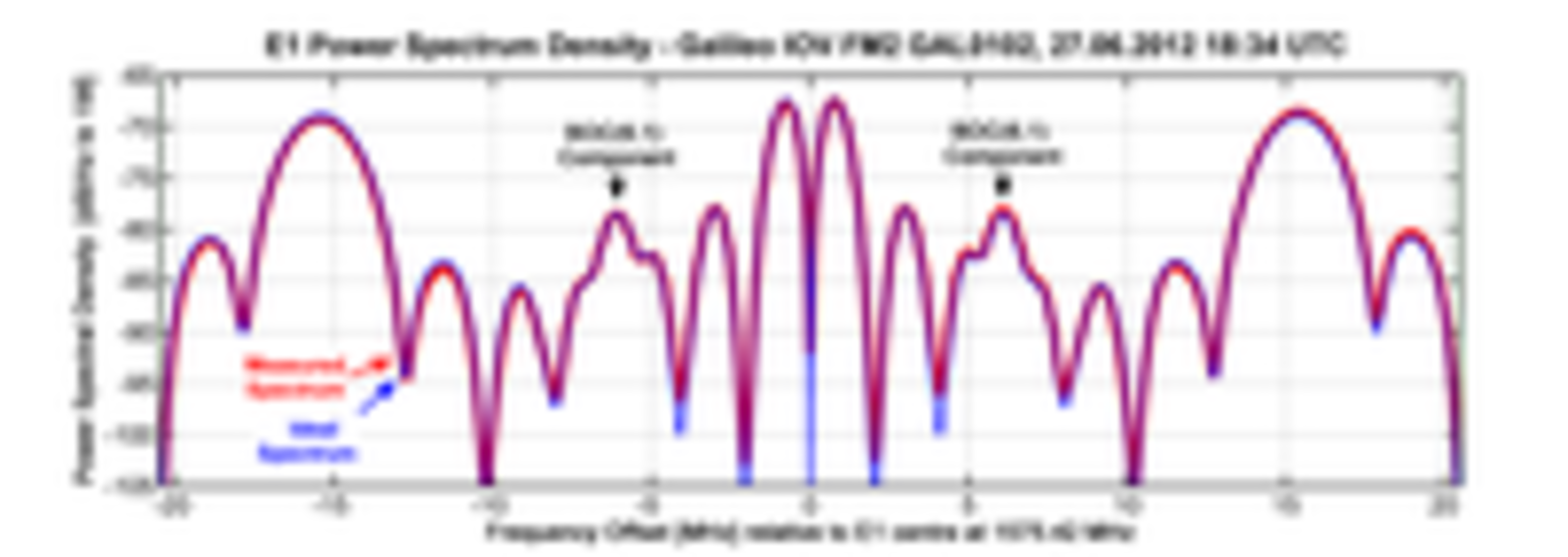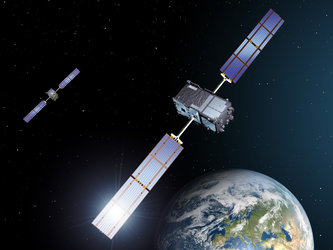Technical details of current Galileo signal
ESA’s first two Galileo navigation satellites in space have achieved their latest milestone, broadcasting the Composite Binary Offset Carrier (CBOC) modulation on E1 Open Service signal.
The E1 Open Service CBOC modulation is the result of multiplexing a wideband signal, BOC(6,1), with a narrow band signal, BOC(1,1), in such a way that 1/11 of the power is allocated, on average, to the high-frequency component.
The signal is the one indicated in the Public Galileo Open Service Signal In Space Interface Control Document (see right hand link).
The satellites enter now in the Routine Operations Phase with continuous signal transmission on E1, E5 and E6 signals.
The signal is the one indicated in the Public Galileo Open Service Signal In Space Interface Control Document (reference web site to be included)
The satellites enter now in the Routine Operations Phase with continuous signal transmission on E1, E5 and E6 signals.
Dummy/spare Navigation Messages are for the time being planned to be broadcast by default on all open signals. The dummy/spare message contents are also described in the Public Galileo Open Service Signal In Space Interface Control Document.
Time of Week and Week Number fields of the broadcast navigation messages are planned to be synchronised with Galileo System Time.
Users intending to perform experiments might experience variations with respect to the above Navigation Message contents due to the current in-orbit validation activities being performed.






